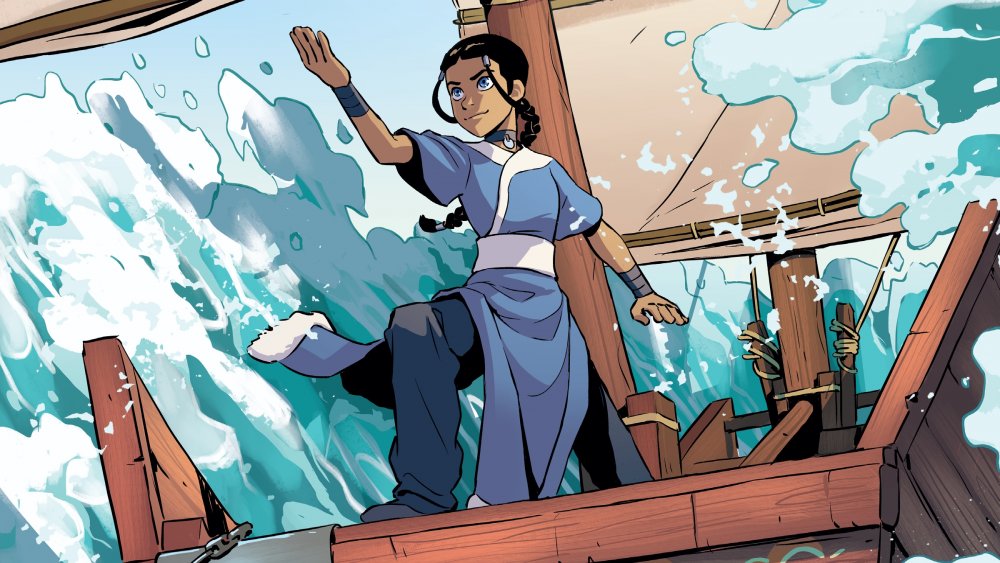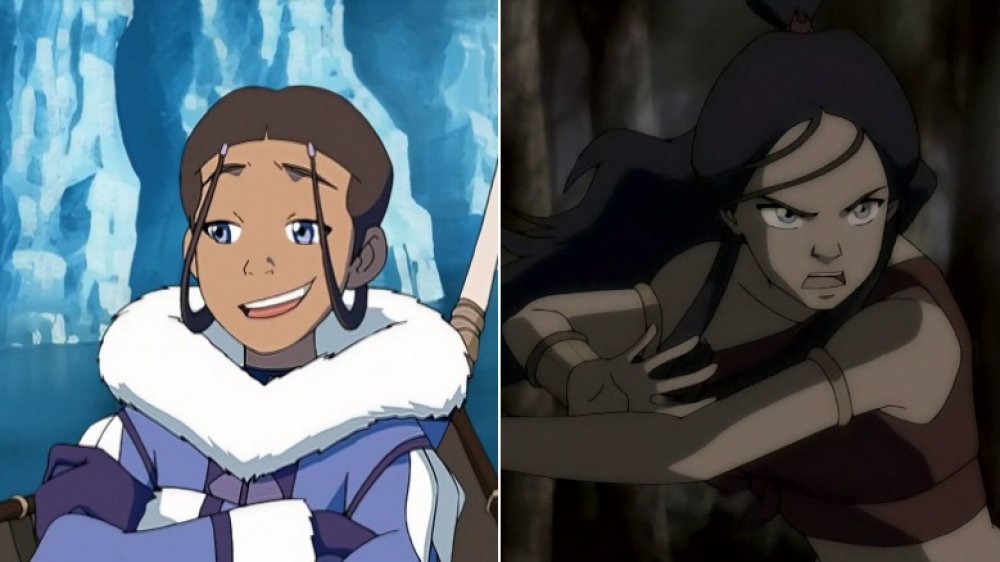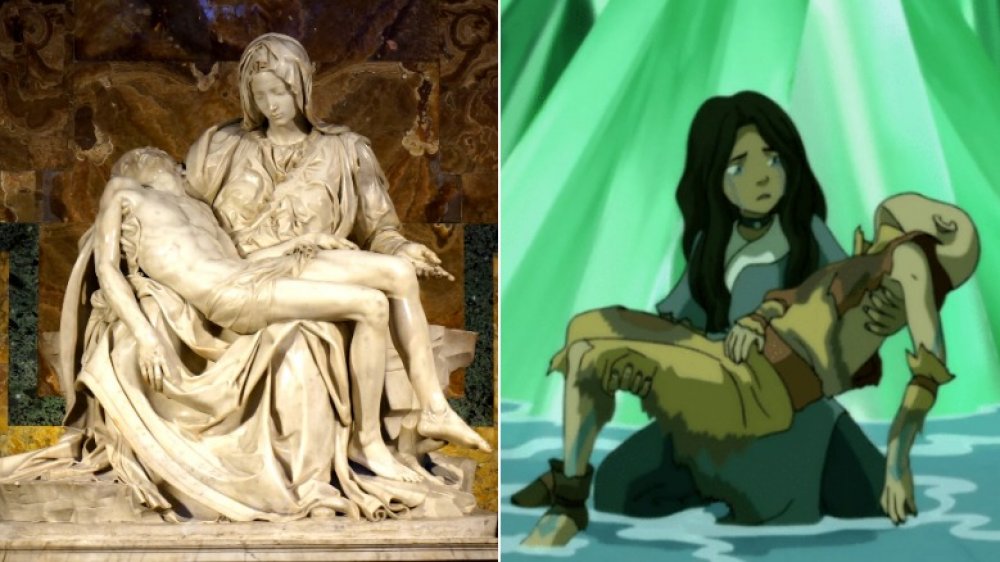The Katara Moment From Avatar: The Last Airbender That Means More Than You Think
Episodes of Avatar: The Last Airbender almost always have a lot to unpack in their short runtime. It may be a Nickelodeon cartoon, but that shouldn't stop anyone from digging deeper to explore the meaning in its world and storytelling. After all, few television shows in recent memory — regardless of target audience — have achieved the transcendent timelessness that Avatar does without crumbling under all the pressure.
Much of that accomplishment has to do with Avatar's engaging cast of characters. As the series progresses, character arcs only get more tangible, believable, and engrossing. Yet even as they change, the heroes and villains (not to mention those who are a little of both) remain the same people they always were deep down. That sentiment is especially true of Katara (voiced by Mae Whitman), whose story brought us a particularly powerful moment in the second season finale that means even more than you might realize.
Katara's transformation
As the narrator of Avatar's opening title sequence, Katara's voice is the first thing viewers hear, and along with her brother Sokka (voiced by Jack De Sena), she's the first character viewers see. She gives off the impression of a budding talent with a lot on her plate, a sister who's had to take on an almost parental responsibility. That's true of her throughout the first season, though she also starts to take matters into her own hands and fine tune her waterbending.
The second season sees Katara elevated to the status of waterbending master, more than capable of instructing Aang (voiced by Zach Tyler Eisen), the Avatar himself, in the art. Growing as a bender doesn't come without growing as a person, however, and she does just that. Accepting Toph (voiced by Jessie Flower), the blind earthbender who plays by her own rules, into the fold is no easy task for Katara, but learning who to trust is a part of growing up.
By the third and final season, Katara stands among the world's most talented benders, able to manipulate her native element in ways she never would have imagined earlier on. She also spends a good chunk of time coming to terms with her past, learns how to forgive those previously believed to be unforgivable — namely, Zuko (voiced by Dante Basco), a former enemy turned friend — and establishes herself as a major player in the world's future.
For a regular girl from the Southern Water Tribe, she comes a long way by Avatar's end. And it's because of all that meticulous character development that a certain scene from the season 2 finale means so much.
Avatar's Renaissance connection
Aang and Katara are on the ropes in season 2's final battle, and losing the fight essentially means losing the Earth Kingdom. With their opponents Azula (voiced by Grey DeLisle) and Zuko fighting side by side and backed by Dai Li agents, chances of winning are slim. The heroes put up a good fight, but not good enough: Azula zaps Aang with a lightning bolt as he's entering the Avatar state, taking him out of commission. Katara catches his limp body as he plummets from above — a dramatic moment captured in a striking composition.
Look more closely, however, and you'll notice that it's more than just a pretty shot. The way Katara's holding Aang is all but an exact reflection of the Pietà, Renaissance artist Michelangelo's world-renowned rendition of Mary holding Jesus. Avatar often plays off of Eastern traditions and religions, but Christian symbolism is not the show's usual forte. Still, when you compare the episode to the Michelangeo sculpture, it makes perfect sense.
Katara is the closest thing to a mother figure Team Avatar has, usually the first to scold the others and the last to want to take unnecessary risks. Mary is much different than Katara, but she's also the most famous mother figure in history; her claim to fame is being the mother of Christ, after all. As the Avatar, Aang's world looks to him as a savior — the Christ figure of the Avatar universe, in a sense. Both Katara and Mary watch as their respective worlds' messiahs die before their eyes, and witness both messiahs resurrect in time: Aang because of Katara's spirit water and healing abilities, Jesus because of a miracle of God.
Seeing Katara grow and change over the course of the show while retaining her motherly streak only adds to the Mary connection. The grief in her eyes is not just the grief of someone who lost a friend, but a surrogate mother who believes that individuality can make a difference in the world. She's spent a lot of time up to this point nurturing Aang's individuality, just as Mary does her best to raise the Son of God. To lose someone like that and keep going, not knowing what the future may hold, illustrates that Katara is a strong young woman, indeed. Her reflection of the Pietà is more than just some cheap symbolism thrown in by the writers or animators — it's something she earns as a character.


